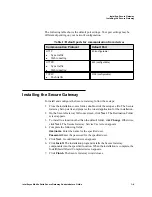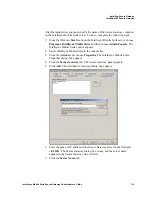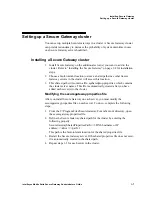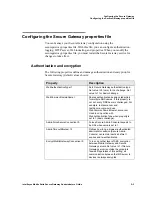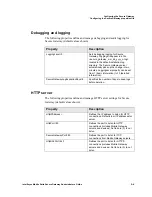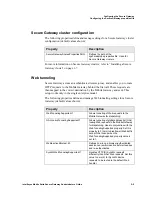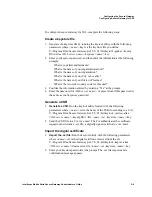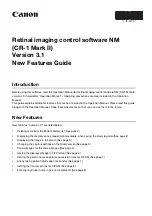
Configuring the Secure Gateway
Configuring Secure Gateway for SSL
Intellisync Mobile Suite Secure Gateway Administrator’s Guide
2–8
URL routing destinations
WebURLRouting[uniqueNumber]=source,destination,flag
is defined as the following:
–
source
is the first folder in the URL
–
destination
is defined as [protocol]address[:port]
–
flag
is used for specifying this is a virtual folderName and the name
should be stripped from the URL before being routed
Examples:
WebURLRouting1=/,http://localhost:8840,0
http://www.securegateway.com/ routes to http://localhost
WebURLRouting2=en,http://localhost:8840,0
http://www.securegateway.com/en/login.asp routes to http://localhost/en/login.asp
WebURLRouting3=intranet,http://intranet,1
http://www.securegateway.com/intranet routes to http://intranet
Configuring Secure Gateway for SSL
SSL support is available in Secure Gateway and provides a default key file;
however, you can override this value by using a provided keytool Java utility,
which enables you to administer public/private key pairs and associated
certificates. The keytool utility stores the keys and certificates in a keystore. The
default implements the keystore as a file. It protects private/public keys with a
password. These properties help configure Secure Gateway for SSL.
When you define your keystore file, you can generate a Certification Signing
Request (CSR). With this CSR, you can obtain a digital certificate from a
Certification Authority (CA), such as Verisign. After you have created your
keystore file, you can use the Secure Gateway Admin Console to insert the
encrypted values into the securegateway.properties file.
For more information about Java Key and Certification Management keytool,
refer to http://java.sun.com/j2se/1.4.2/docs/tooldocs/windows/keytool.html
for documentation.



